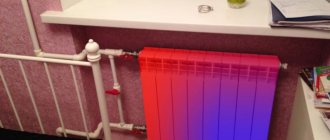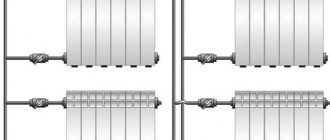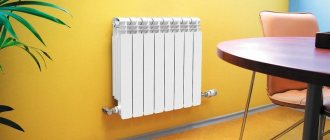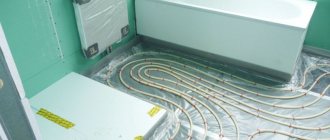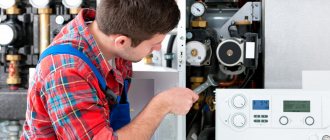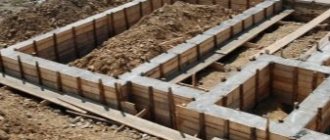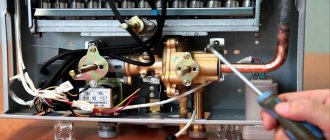The battery is clogged
The formation of a blockage in a heating device is one of the most common causes when the bottom of the radiator is cold and the top is hot. The reason is the insufficient quality of the thermal fluid. The water supplied to the heating system often contains impurities, which, under the influence of high temperature, form into plaque that accumulates on the inner surface of the radiators.
The result of the blockage is a disruption in the movement of the heated coolant through the radiator and its uneven heating. To eliminate circulation problems, you can use mechanical and chemical methods to clean the radiator. In the most difficult cases, specialists often use hydrodynamic and hydropneumatic methods, as well as highly effective electro-hydropulse cleaning of batteries.
Troubleshooting
If you find that your radiator is hot on top, but much colder on the bottom, then you should look for the reason. To do this, you need to perform a number of actions:
- Check the radiator connection. Have all the requirements been met when connecting the heating system?
- Bleed and clean.
- Check the condition of the control valves.
- Check the condition and connections of the pipes.
- Check the circulation pump. Replace it if damaged or install it.
If the pipes were not connected correctly, the bottom pipe will be hot. In this case, it is necessary to disconnect the pipes and reconnect them, but in the correct order. It will also be necessary to establish a work plan. If the pipes were routed correctly, the lower pipe will be slightly warm. In this case, there are no problems with connecting the pipes.
A common cause is the occurrence of air locks in the radiator. To avoid this problem, a special vent must be installed to remove air. You should shut off the supply, open the vent and remove the air. Then you need to turn off the tap and turn the heating valves.
If you do not have a circulation pump or it has low power, then the pressure in the heating system will be weak. And, therefore, the water will move slowly through the radiator. In this case, you need to purchase a powerful circulation pump.
If the heating system is equipped with a control valve, then this may be the cause of the problem. It needs to be removed and checked. If the cross-section is narrowed, you can increase it using tools. Or even replace it with a new faucet. After this, you can reinstall the element.
If none of the reasons listed above are a problem, then you should check the condition of the pipes. There may be various contaminants that need to be cleaned. If the pipes are severely damaged, then you need to buy new pipes.
After studying the article, you can independently identify the cause of the problem. After a thorough inspection of the radiator and elimination of the problem, you can establish high-quality operation of the heating system.
There is air in the radiator
An air-filled heating system is also ineffective in heating rooms. As a rule, such an unpleasant situation with the accumulation of air bubbles in radiators is observed in apartment buildings on the upper floors, which is easily explained by the elementary laws of physics - air rises towards the roof. Usually such batteries have a cold top, but this does not exclude the fact that there may also be a cold bottom.
For preventive purposes, standard Mayevsky taps are installed, through which all the air accumulated in the radiators is drained from the system. You need to shut off the hot water supply pipe and leave the “return” in the open position, then open the tap and let out the air. After closing the tap, the supply of coolant to the radiator is resumed.
Just kidding, it's annoying!
– My God, how much did you spend on this dress? – I had to starve for two weeks, but what can’t you do for the sake of fashion!
Universal answers:
“I admire your ability to ask questions that baffle!” Or: “You are an amazing woman (amazing man), do you know what has always amazed me about you? This is your ability to ask incorrect (complex, rhetorical) questions!”
“I’ll be happy to answer your question, just tell me first why you’re so interested in this?”
“For what purposes are you interested?”
“Do you really want to talk about this?” If you hear an affirmative “Yes,” feel free to retort: “But I don’t want to,” and smile.
If you don't want to have anything more to do with a person who asks insensitive questions, you can afford a little more. For example, remark in response: “It’s my damn business.”
Based on materials from 5sfer.com
Battery not connected correctly
Another very common situation of cold bottom and hot top of the battery is its incorrect (unprofessional) connection. Particular attention when organizing a heating system will require the installation of a bypass in front of the heaters, the correct choice of connection diagram and proper installation of all shut-off valves.
The best option would be a parallel (diagonal) connection with a coolant supply at the top and a “return” at the bottom. In addition, it must be remembered that there must be the necessary space at the top and bottom of the battery to ensure normal and stable air exchange. Otherwise, the operation of such a device will be completely ineffective and problematic.
Maybe the neighbors are to blame?
It may sound trivial, but first make sure that you have hot water in your home, whether the tap is open for it to flow, or the riser is closed due to plumbing work in the basement. Don’t be too lazy to run through your neighbors on the upper floors. In the event of unprofessional repairs, some of them will have a comfortable radiator temperature, but all the residents below the riser will not receive heat and will be cold.
You have every right to come in like a neighbor with the question “the batteries are not heating: what to do”, and at the same time check their heating temperature. If you find a battery that is warmer than yours, then the problem that has arisen may simply result from the incorrect installation of the valves at your neighbor’s. Your further actions will depend on the situation; perhaps the shut-off valves, which deprived other neighbors of comfort, will be removed without a scandal. Or call your housing and communal services structure and, with the help of the administration, restore civil justice.
Low temperature
If the difference in the temperature conditions of the bottom and top of the batteries is not too significant, then there is no need to worry. This arrangement of radiators is quite natural. The circulating coolant always has time to cool down a little, which is due to fairly high heat output rates. Very large discrepancies may require system intervention.
If the water temperature in the heating system is low, then it will be necessary to increase the heating of the coolant by increasing the power of the operating heater. A good result is also achieved by using a special heat-reflecting screen. For this purpose, it is recommended to use traditional aluminum foil or modern and reliable material such as penofol.
An important point with a two-pipe connection is the ability to regulate the temperature in a separate battery using special fittings, represented by a conventional shut-off valve. This ensures an increase or decrease in the volume of coolant in each radiator by adjusting the shut-off valves.
Operating principle of the engine cooling system
Liquid cooling works on the principle of transferring heat to a circulating intermediate agent. It takes energy from the heated areas of the engine and transfers it to the cooler.
Hence the set of elements necessary for this:
- cooling jackets for the block and cylinder head;
- main radiator of the cooling system with expansion tank;
- control thermostat;
- water pump, also known as pump;
- non-freezing liquid - antifreeze;
- forced cooling fan;
- heat exchangers for removing heat from units and the engine lubrication system;
- interior heating radiator;
- optionally installed heating systems, additional valves, pumps and other devices associated with antifreeze flows.
Immediately after starting a cold engine, the system's task is to quickly warm it up in order to minimize the time it operates in suboptimal mode. Therefore, the thermostat blocks the flow of antifreeze through the radiator, returning it after passing through the engine back to the pump inlet.
Moreover, it does not matter where the thermostat valves are installed; if it is closed at the outlet of the radiator, then the liquid will not get there. The turnover occurs in a so-called small circle.
On the subject: How to remove air from a car's cooling system
As the temperature rises, the active element of the thermostat begins to move the rod, and the small circle valve gradually closes. Some of the liquid begins to circulate in a large circle, and so on until the thermostat is completely open.
In reality, it opens completely only at maximum thermal load, since this means the limit for the system without the use of additional systems for cooling the internal combustion engine. The very principle of temperature control implies constant control of the intensity of flows.
If, however, the temperature reaches a critical value, this means that the radiator cannot cope, and the air flow through it will be increased by turning on the forced cooling fan.
You must understand that this is more of an emergency mode than a standard one; the fan does not regulate the temperature, but only saves the engine from overheating when the flow of incoming air is low.
Low coolant speed
Insufficient coolant velocity directly depends on the design of the heating system, the characteristics of the coolant, the power and performance of circulation pumping equipment, pipe material and diameter.
Optimal indicators:
- private households and apartments - 0.5-1.5 m/sec;
- production premises - within 3 m/sec.;
- administrative buildings - within 2 m/sec.
The speed of movement of the coolant in pipeline heating systems is taken in accordance with the permissible equivalent sound level in rooms for various purposes. When the power of the pumping equipment is reduced, the movement of the coolant slows down, which has time to cool down and the last radiators warm up worse. As a special case, the bottom can be cold and the top of the radiators hot. In this case, it is necessary to increase the power indicators of the device, which will ensure not only faster circulation, but also the most uniform heating of the radiators.
Weak pressure
The quality of space heating may decline due to failures in pressure indicators in the heating system. Low and high pressure levels in the heating circuit negatively affect the operation of the system and the efficiency of space heating. The second option quickly disables individual components and elements, the first does not allow for comfortable living.
A decrease in dynamic pressure causes:
- incorrect balancing;
- presence of air pockets;
- unheated coolant;
- excessive cross-section of pipelines;
- insufficient power of pumping equipment.
A drop in pressure in the system often occurs due to a coolant leak, a malfunction of the pumping equipment, as a result of a rupture of the expansion tank membrane and the appearance of cracks in the walls of the expansion tank. The problem can also be caused by malfunctions in the safety unit and water leakage from the heating circuit.
Monitoring operating parameters under operating conditions of closed heating circuits, as well as automatic adjustment, require the installation of a safety group. Balancing an open-type double-circuit system is most often done manually, but work can also be done using thermostatic valves.
The shut-off valve is broken
Shut-off type fittings are intended to completely or partially shut off the supply of coolant to the heating network. The main components of such fittings are presented:
- valves;
- ball valves;
- thermal heads with mechanical or automatic adjustment.
The lower part of the battery does not warm up, but the upper part becomes hot due to malfunctions inside the faucet. As a rule, problems are caused by a broken valve or any other disturbance that prevents the correct functioning of the element, as well as the unimpeded circulation of heated liquid.
Self-installation of fittings in the form of a valve requires increased attention. The manufacturer must indicate the direction of movement of the coolant directly on the housing. It is in accordance with this marking that this element should be installed. Any violation of installation rules is the main reason for the lack of trouble-free movement of water.
DIY repair
The main, easy diagnosis is checking the fluid level in the tank.
If you do not change the coolant for a long time (the higher the quality, the less often it can be changed), plaque appears on the inner walls of the channels.
Dirty channels reduce the cross-sectional area and impede circulation.
Procedure for flushing the radiator:
- Disconnect the lower pipe.
- Pour regular water through the neck. It is advisable to supply water under high pressure.
- Some people disconnect the radiator, unsolder the upper and lower radiator tanks, and then clean them mechanically.
Safety precautions! If the engine is hot, do not open the radiator cap, as you may get burned by boiling water or steam.
Tips and tricks
Experts in the field of organizing highly efficient heating systems advise paying attention to the following simple but effective recommendations:
- in multi-storey buildings, it is advisable to connect batteries in a diagonal pattern, which guarantees the most even distribution of liquid across the radiators;
- improper soldering of plastic pipes often causes the passage to be blocked by molten elements, which prevents the batteries from fully warming up;
- The addition of radiator compartments or the use of hinged aluminum casings will help increase heat transfer in the apartment;
- Steady heating of batteries in apartment buildings occurs only on the third or fourth day after the system is powered, so until this moment there is no point in taking any decisive action;
- A prerequisite for proper system maintenance is preventive cleaning of radiators from the accumulation of scale, limescale or rust.
A radical way to solve the problem will be to replace old radiators with modern bimetallic products with an improved design, as well as increased thermal efficiency.
Possible reasons
Many people believe that there is nothing to worry about and that everything will work itself out. This is far from true; such a problem can cause a lot of inconvenience. In reality, everything may end in serious repairs.
- Heating devices do not operate efficiently in this mode.
- The temperature in the apartment drops.
- Adjusting the heating system parameters does not solve the problem.
You need to know that a small heat difference between the lower and upper parts of the radiator is not a global flaw. Such defects affect not only old heating systems, but also modern bimetallic radiators.
Unstable heating of the heating system can occur in various cases. Therefore, knowing the cause of the malfunction is very important.
